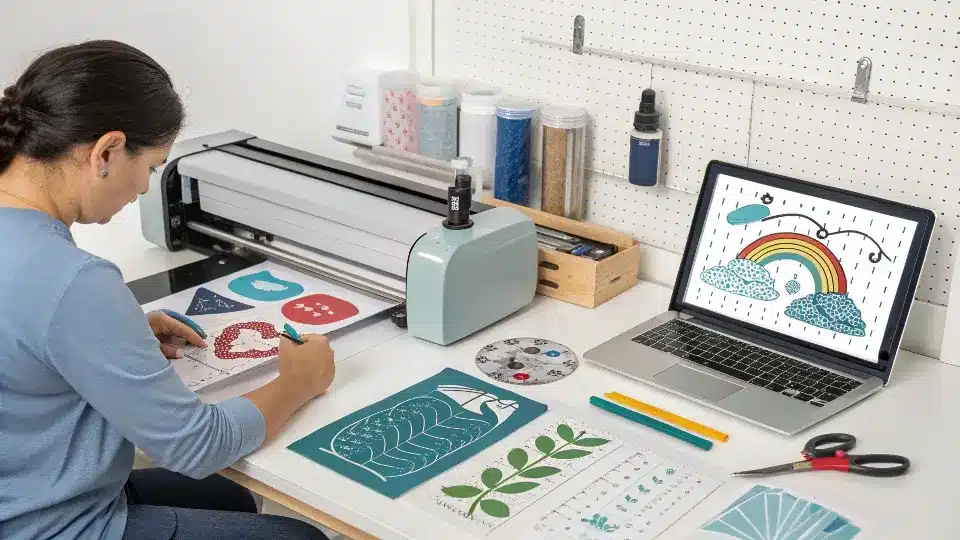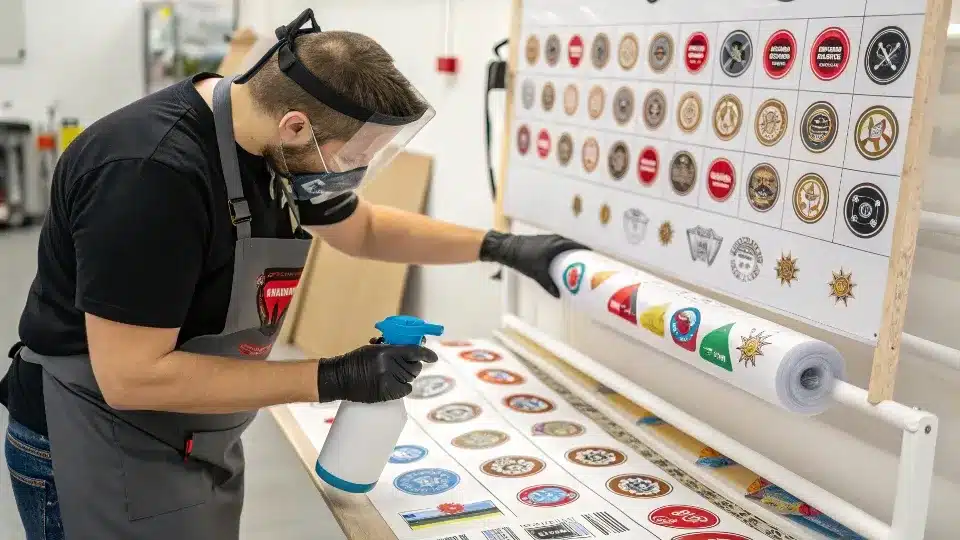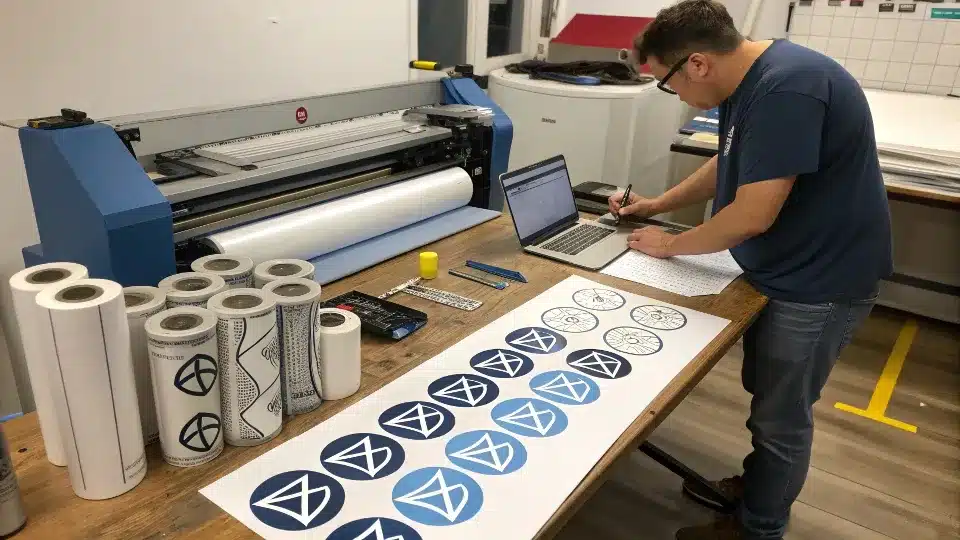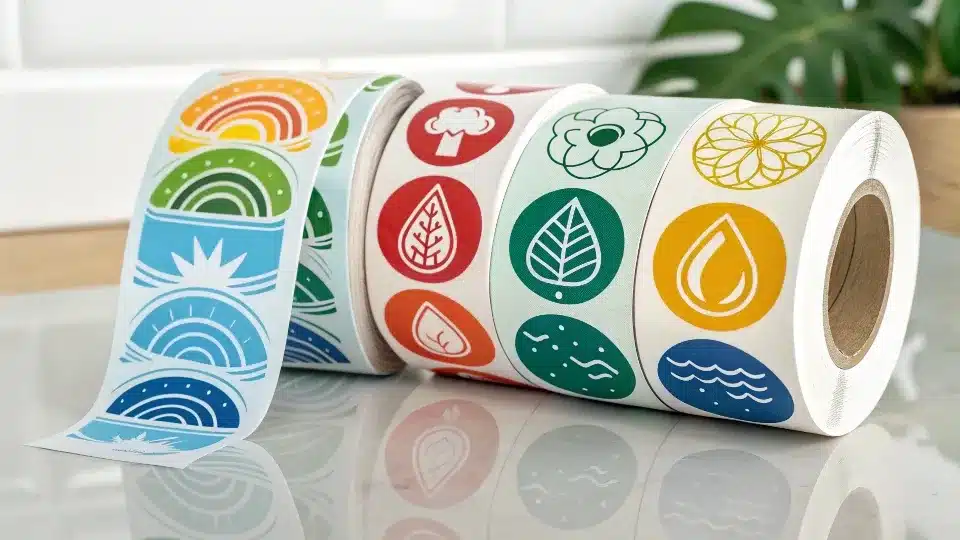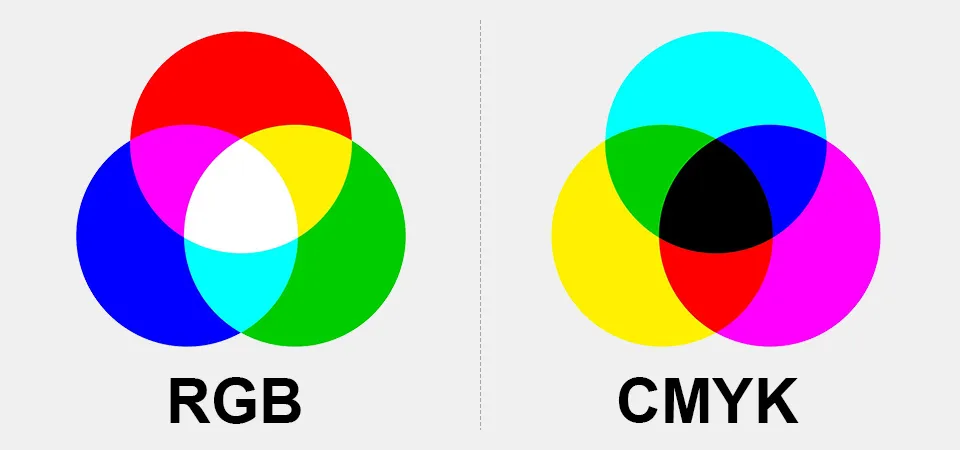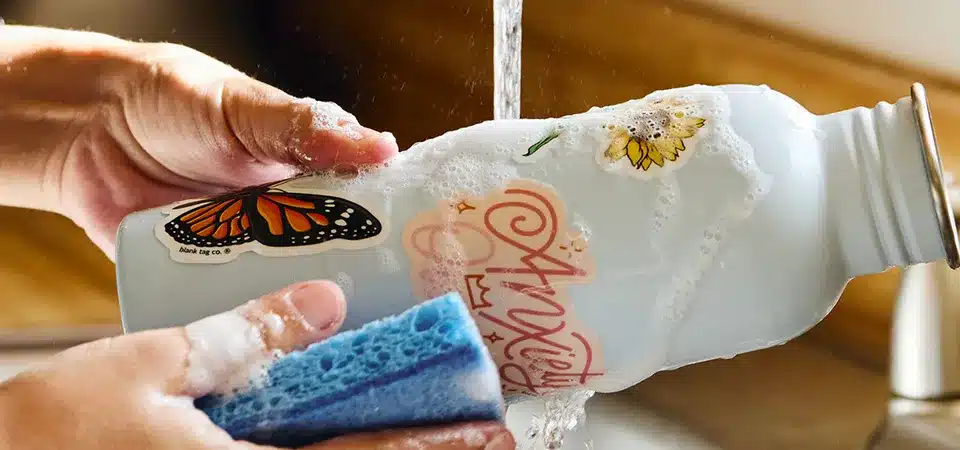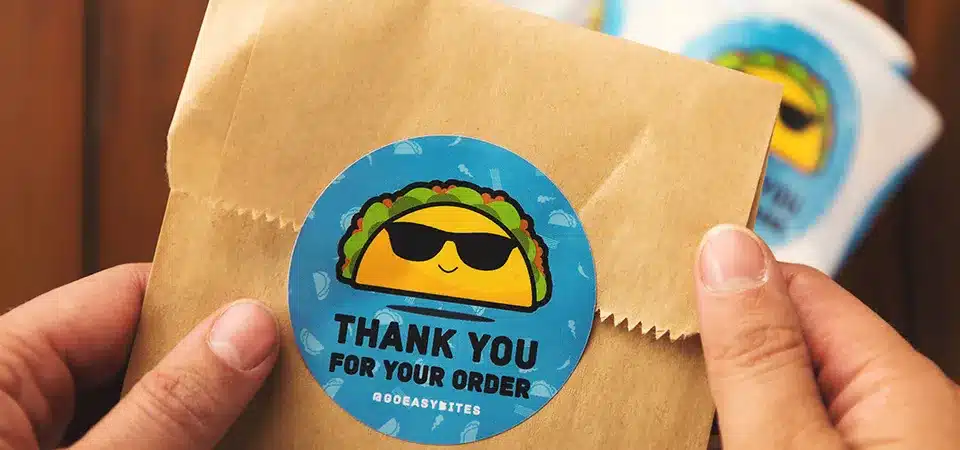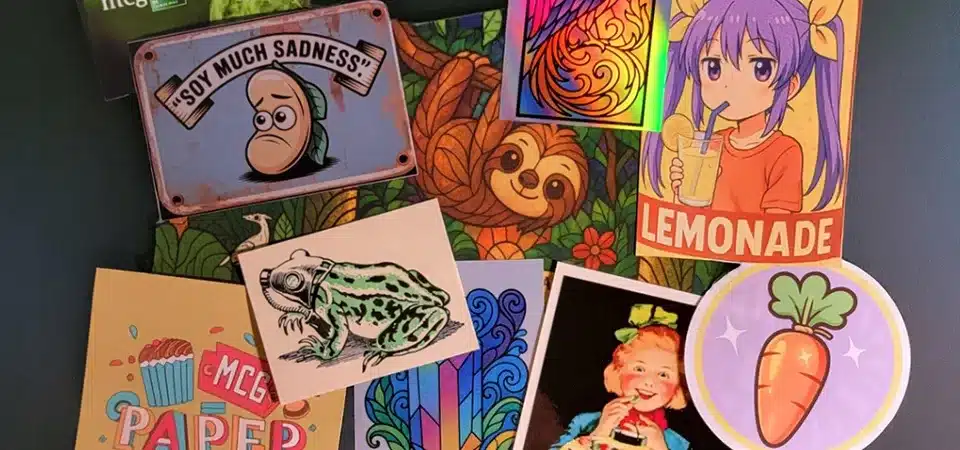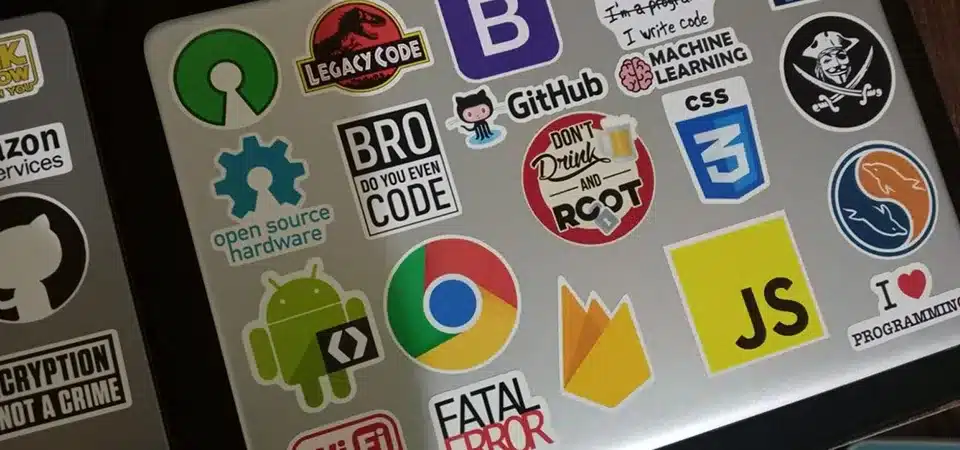Tired of your beautiful stickers smearing and peeling? It's frustrating when your hard work gets ruined by a little water. Here’s the secret to making them last.
To make waterproof vinyl stickers, you need three key things: waterproof printable vinyl sheets, waterproof ink (pigment for inkjet, or laser), and a sealant like a clear laminating sheet. This combination ensures your stickers can withstand water without smearing or peeling.
That’s the quick answer, but I know you have more questions. As someone who runs a sticker business, I get asked these things all the time. Let’s break it down step-by-step so you can get professional results at home.
How to make your vinyl stickers waterproof?
Are your homemade stickers failing the durability test? They look great at first, but one wash and they look unprofessional. Just follow these pro steps for perfect results.
Making your vinyl stickers waterproof is a clear, multi-step process. You must start with waterproof materials, print with waterproof ink, and then seal your printed design with a clear laminate or a waterproof spray. This creates a durable barrier against moisture.
Getting that professional, truly waterproof finish is all about building layers of protection. I've spent years perfecting this in my own business, and it comes down to getting each step right. It’s not just one thing, but a system working together.
Step 1: Start with Waterproof Vinyl
The foundation of your sticker is the most important part. You must use sheets labeled as "waterproof printable vinyl." Do not use sticker paper. Sticker paper is just paper with an adhesive back, and it will turn to mush when it gets wet, no matter how much you seal it. Vinyl is a type of plastic, so it naturally repels water.
Step 2: Use the Right Ink
This is where many people go wrong. If you use an inkjet printer, you need to use pigment ink. Most standard home inkjet printers use dye ink, which is water-based and will run immediately. Laser printers are easier because their toner is essentially a plastic powder that gets melted onto the vinyl, making it naturally waterproof.
Step 3: Seal the Deal
Even with the right vinyl and ink, you need a final protective layer. This locks in the ink and protects the sticker from scratches. The best method is using a clear, self-adhesive laminating sheet. It adds a thick, durable layer. A good alternative is a clear acrylic spray sealant like Krylon Crystal Clear. You need to apply 2-3 very light coats for it to work.
| Sealing Method | Durability | Best For | Tip |
|---|---|---|---|
| Laminating Sheet | Highest | Flat surfaces, high-wear items | Use a squeegee to apply it slowly and avoid bubbles. |
| Spray Sealant | Medium | Irregular shapes, quick projects | Spray in a well-ventilated area and let it fully cure. |
Can vinyl stickers be waterproof?
Do you doubt that vinyl stickers can truly survive the dishwasher? It’s a waste of money to buy materials that don't work. The answer lies in using the right system.
Yes, vinyl stickers can be completely waterproof, but not all vinyl is created equal. The key is using printable waterproof vinyl combined with a sealant. The vinyl material itself resists water, but the ink and surface need protection to prevent smudging and fading.
In my business, we call something "waterproof" only if it can survive a dishwasher cycle. Just being "water-resistant" isn't good enough for products like water bottles or car decals. The term "vinyl sticker" can be misleading because there are many different types. Let's look at what makes one sticker fail and another one last.
The Vinyl Itself is Only Part of the Story
The base material, vinyl (polyvinyl chloride or PVC), is a plastic. By nature, it does not absorb water. This is a great start. However, when you buy "printable vinyl," it has a special top coating designed to absorb and hold ink. This coating can sometimes be a weak point if it's not designed for waterproofing. Always look for products specifically marketed as "waterproof printable vinyl."
The Real Weak Points: Ink and Adhesive
As I mentioned, the ink is often the first thing to fail. Dye-based inkjet ink will bleed the second it touches water. The adhesive on the back can also be a problem. Cheap stickers might use a water-soluble adhesive that loses its grip when wet, causing the sticker to peel at the edges. A true waterproof sticker uses a permanent, water-insoluble adhesive.
| Material Type | Water Resistance | How it Fails | Best Use |
|---|---|---|---|
| Sticker Paper | None | Absorbs water, tears, ink runs | Indoor, dry-use only (planners, scrapbooks) |
| Standard Vinyl | High | Ink can scratch off, not printable | Die-cut solid color decals (not printed) |
| Waterproof Vinyl | Very High | Needs sealant to protect ink | Water bottles, cars, outdoor gear |
How can I print my own waterproof stickers?
You want to make your own stickers at home, but you are afraid of buying the wrong printer or supplies. Here is the exact setup you need to get started.
You can print your own waterproof stickers using either an inkjet or a laser printer. For inkjet, you must use pigment-based ink, not dye ink. For laser printers, the toner is naturally water-resistant. Always print on waterproof-rated vinyl sheets.
The printer you have at home can probably do the job, but you need to know what you're working with. I've used both types of printers extensively, and each has its pros and cons for making stickers.
Printing with an Inkjet Printer
This is the most common type of home printer. The great thing about them is their ability to produce vibrant, high-quality photo prints. The critical factor is the ink.
- Pigment Ink: This is what you need. Pigment inks are made of solid particles suspended in liquid. They sit on top of the vinyl and are naturally water-resistant. Many Epson and Canon photo printers use pigment inks.
- Dye Ink: This is the standard in most cheap home printers. Dye ink is like food coloring; it dissolves in water and will run.
To check your ink type, search for your printer model online. If you have dye ink, it's almost impossible to make a truly waterproof sticker.
Printing with a Laser Printer
Laser printers are fantastic for waterproof stickers. They don't use liquid ink at all. Instead, they use a fine plastic powder called toner. The printer uses heat to melt and fuse this toner directly onto the vinyl sheet. Because the design is essentially made of plastic, it's very durable and completely waterproof right out of the printer. While you still should laminate it to protect against scratches and UV fading, you won't have to worry about the ink smearing.
| Printer Type | Ink/Toner | Waterproofness | Best Feature |
|---|---|---|---|
| Inkjet | Pigment Ink | High (with sealant) | Excellent color vibrancy |
| Inkjet | Dye Ink | None | Not suitable for this task |
| Laser | Toner | Very High (naturally) | Sharp text and durability |
What do you put over printable vinyl to make it waterproof?
Your printed stickers look amazing, but they still get scuffed or smudge with water. The final sealing step is what separates amateur stickers from professional ones.
To make printable vinyl truly waterproof, you must apply a protective top layer. The two best options are a clear self-adhesive laminating sheet or a waterproof spray sealant, like a clear acrylic spray. The laminating sheet offers the most durable protection.
This final step is non-negotiable in my opinion. It's the armor for your sticker. It protects the ink not just from water, but also from scratches, oils from your hands, and fading from the sun. I've tested dozens of methods, and these two are the only ones I recommend.
The Best Method: Cold Lamination Sheets
This is the gold standard for durable stickers. These are thin sheets of clear vinyl with an adhesive back. You peel the backing and carefully apply it over your entire sheet of printed stickers before you cut them out.
- How to Apply: My pro tip is to peel back just one edge of the laminate. Line it up with the edge of your sticker sheet. Use a credit card or a squeegee to slowly press the laminate down, pushing out from the center to avoid bubbles.
- Benefits: It creates a thick, tough, and completely waterproof barrier. It also gives the sticker a professional look and feel, and you can choose between glossy, matte, or even sparkly finishes.
A Good Alternative: Spray Sealants
Clear acrylic sprays are another option. Products like Krylon Crystal Clear or Mod Podge Ultra Spray are popular.
- How to Apply: You must work in a well-ventilated area. Hold the can about 10-12 inches away and apply a very light, sweeping coat. Don't try to cover it all at once or it will drip. Let it dry for 30 minutes, then apply another light coat. I recommend 2-3 coats total.
- Benefits: This method is great if your stickers have very intricate cuts, where applying a laminate sheet would be difficult. It's faster than laminating, but it's not as durable against heavy scratching.
| Sealing Method | Protection Level | Feel & Finish | Difficulty |
|---|---|---|---|
| Laminating Sheet | Scratch & UV resistant | Thick, professional, various finishes | Medium (bubbles can be tricky) |
| Spray Sealant | Good water protection | Thin layer, can be uneven | Easy (requires patience for coats) |
Conclusion
Making durable waterproof stickers is simple. Just combine waterproof vinyl, the right ink, and a quality sealant like a laminate sheet. Now you can create professional stickers that last.

